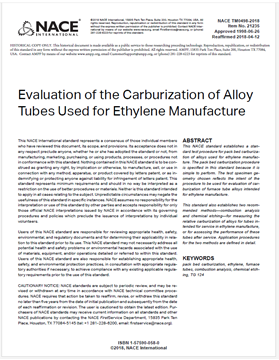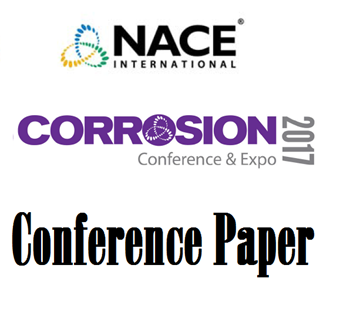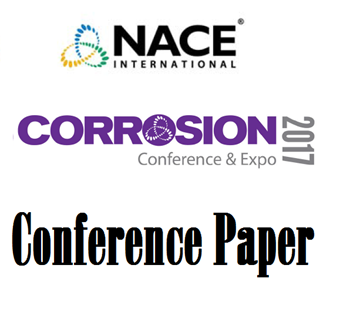Search
Materials Selection and Design
View as
Sort by
Display
per page
TM0497-2012-SG (Spanish), “Técnicas de Medición Relacionadas con Criterios para la Protección Catódica en Sistemas de Tuberías Metálicas Sumergidas o Subterráneas”
Product Number:
21267-SG
ISBN:
1-57590-047-5
Publication Date:
2012
$179.00
TM0497-2018, Measurement Techniques Related to Criteria for Cathodic Protection on Underground or Submerged Metallic Piping Systems
Product Number:
21231-SG
Publication Date:
2018
$179.00
TM0497-HD2012-SG Measurement Techniques Related to Criteria for Cathodic Protection on Underground or Submerged Metallic Piping Systems
Product Number:
21231-HD2012
ISBN:
1-57590-047-5
Publication Date:
2012
$179.00
TM0498-2018, Evaluation of the Carburization of Alloy Tubes Used for Ethylene Manufacture
Product Number:
21235-SG
Publication Date:
2018
$179.00
TM0498-HD2014-SG Evaluation of the Carburization of Alloy Tubes Used for Ethylene Manufacture-HD2014
Product Number:
21235-HD2014
Publication Date:
2014
$179.00
Uniform and Localized Corrosion Study of Base Material and Welds of Ni-Cr-Mo (W) Alloys
Product Number:
51317--9406-SG
ISBN:
9406 2017 CP
Publication Date:
2017
$20.00
Unique Rigging Applications for Suspended Scaffolds: Key Element - Safety Plans Three Key Considerations when You are Developing Your Access Safety Plan
Product Number:
41214-848-SG
Publication Date:
2014
$20.00
UNS N08830 – New Ni-Fe-Cr-Mo-N Super-Austenitic Alloy
Product Number:
51317--8979-SG
ISBN:
8979 2017 CP
Publication Date:
2017
$20.00
UNS S31400 Stainless Steel as Reactor Material in a Thermal Cracking Process
Product Number:
51317--9320-SG
ISBN:
9320 2017 CP
Publication Date:
2017
$20.00
Use of Pre-Construction Primers in Marine Construction
Product Number:
41215-876-SG
Publication Date:
2015
$20.00











